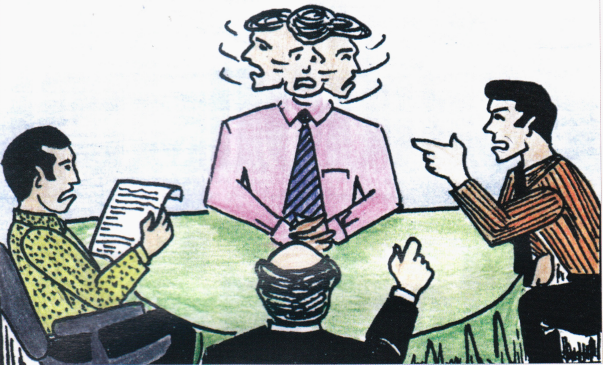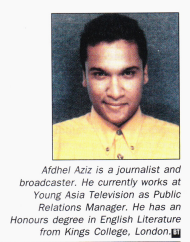Have you ever sat nervously in a corridor waiting to be called for that final interview that decides whether you get the great job with the four weeks paid vacation, house loan, car loan and dental plan? Ever sat nervously in front of four guys who could have taught the Gestapo a few things about interrogation? Well, fear no more. Your brave correspondent has managed to seize a memo sent out to all the interviewing panel members, a memo that gives tips on how to dissolve even the hardiest of the candidates into a gibbering mass of flesh on the floor Read on and be warned…
Oral Examination Procedure
The purposes of an oral examination are few and simple. In these brief notes the purposes are explained and the practical rules for conducting an oral examination are given. Careful attention to the elementary rules is necessary in order to ensure a truly successful examination. From the standpoint of each individual examiner, the two basic purposes of the oral examination are: to make that examiner appear smarter and trickier than either the examinee or other fellow examiners, thereby preserving his self-esteem, and to crush the examinee, thereby avoiding the messy and time-wasting problem of post-examination judgement and decision.
Both of these aims can be realized through diligent application of the following time-tested rules:
1. Before beginning the examination, make it clear to the examinee that his/her whole professional career depends on his/her performance at the interview. Stress the importance and formality of the occasion. Put the examinee in his/ her proper place at the outset itself
2. Throw out your hardest question first. (This is very important. If your first question is sufficiently difficult or involved, he/she will be too rattled to answer subsequent questions, no matter how simple they may be).
3. Be reserved and stern in addressing the examinee By contrast, be very jolly with the other examiners. A very efficient device is to make humorous comments about the examinee’s performance to the other examiners; comments. which tend to exclude the examinee and set him/her apart (as though he/she were not present in the room).
4. Constrain the interviewee. Impose many limitations and qualifications in each question. The idea is to complicate an otherwise simple problem.
5. Force him/her into making a trivial error and then let him/her puzzle over it for as long as possible Just after the examinee realises the mistake made but just before he/she has a chance to explain it correct it yourself, rather disdainfully. This takes real perception and timing, which can only be acquired with some practice
6.When the interviewee finds himself/herself deep in a hole never lead him/her on Instead, Sigh, and shift to a new subject .

7.Ask him/her snide questions such as, “didn’t you learn that in your last job”?
8. Do not permit him/her to ask you clarifying questions. Never repeat or clarify your own statement of the problem. Tell him/her not to think out aloud, what you want is the answer.
9.Every few minutes, ask the examinee if he/she is nervous.
10. Station yourself and the other examiners in such a way that the examinee cannot face all of you at once. This enables you to subject him/her to a sort of bin- aural crossfire. Wait until he/she runs away from you towards someone else, and then ask him/ her a short direct question. With proper coordination among the examiners it is possible under favorable conditions, to spin the examinee through several complete rotations. This has the same effect is suggestion above.
11. Wear dark glasses. Incurability is unnerving
12. Terminate the examination by telling the examinee, “ don’t call us , We Will Call You”, the classics always work the best.




